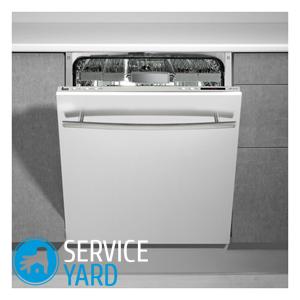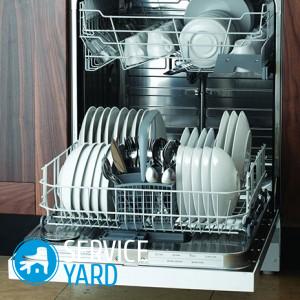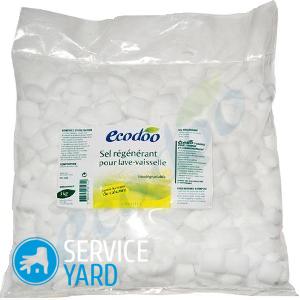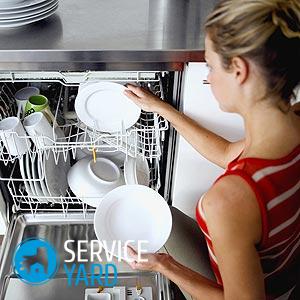How to use a dishwasher?
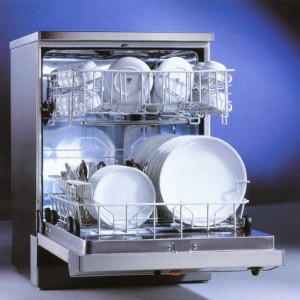
Along with a stove and a refrigerator, a modern dishwasher takes its place in modern kitchens. Dishwashers, like any other device, need proper operation. Sometimes even experienced owners do not know how to use a dishwasher. Therefore, in this article you will find all the rules for using such equipment in an accessible manner.
to contents ↑Dishwasher Facts
The first mechanized dishwasher went on sale in 1886. The American invented Josephine Cochrane, who once said the famous phrase: “I am a woman, not a dishwasher!”. In the 1950s, America began selling compact dishwashers for home use. Our dishwasher has long been considered a luxury, but in recent years, more and more housewives are aware of their advantages: the quality of washing, saving time.
to contents ↑Important! This is also used by manufacturers of home appliances, which offer a wide range of models in stores, and users are increasingly asking consultants: how to use the dishwasher correctly, after its purchase. But not all of them can be immediately remembered, therefore it is better to keep the “cheat sheet” on hand and periodically review it for the first time.
Types of Dishwashers
Dishwashers are:
- floor standing (freestanding or built-in dishwashers);
- desktop (compact).
Floor dishwashers, in turn, are of 2 types:
- narrow aggregates - for 9-13 sets (45 cm wide);
- full-format appliances - for 7-16 sets (60 cm wide).
Important! By a set you need to mean a set of dishes for 1 person (cutlery, mug, saucer, flat plate, deep plate).
Also, dishwashers are distinguished by the mode of operation, type of loading, economical consumption of water and electricity, and other parameters.
Important! Regardless of the brand of the device, you need to know how the dishwasher works, general rules on how to use it, and follow it all the time.
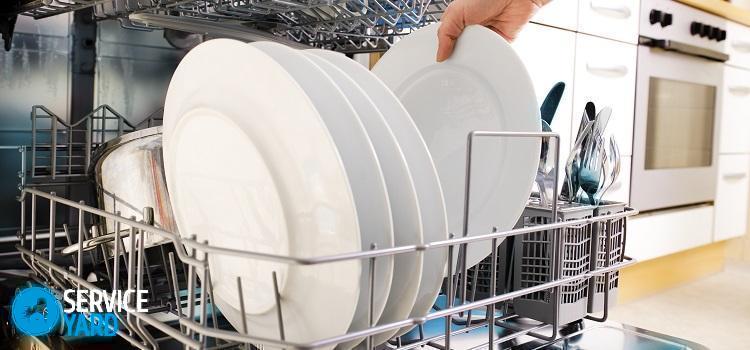
Rule number 1 - correctly place the dishes in the dishwasher
In this regard, first of all, consider the following rules:
- Before you put the dishes in the dishwasher, rinse it and remove the remnants of food.
- If one of the functions of the dishwasher includes “pre-soaking”, be sure to use this option to clean pans and pots.
- If there is no such function, then use special means for dishwashers, for example, Claro, to solve the problem of soot.
Sort dishes by size
To properly place dishes in the dishwasher, consider the following features of modern models:
- the lower basket is designed for large utensils: pots, pans, large dishes;
- top - for tableware: plates, cups, etc.
Important! Cutlery: spoons, forks, knives, usually placed in a special tray provided with the machine or sold separately.
Putting the dishes in the car
If you correctly put the dishes in the dishwasher, you will not only be able to achieve its perfect cleanliness after processing. For 1 cycle you can wash more items. For this:
- Start the download from the bottom basket. Dishes should not interfere with the rotation of the rocker arm of the machine, so do not place utensils with long handles vertically.
- Load small utensils in the upper basket.
- The water in the dishwasher is usually supplied from the bottom up, so hollow objects are best placed upside down. Do not put them on their sides, as water and detergents will remain in the utensils.
- It is also not recommended to put objects in each other.
- Place large plates at the edges, and small ones closer to the center.
- Put the cutlery tray in the middle (if there is no tray, the appliances should still be in the center).
- Cups load upside down.
- Do not overload the machine. If the dishes are very dirty, then place the dishes not in each cell of the basket, but through one.
Important! Ideal - if the dishwasher allows you to adjust the height of the upper basket. Thanks to this function, you can choose the optimal height: not too close to the lower basket and to the ceiling. This is necessary so that the pressure of the water jet evenly falls on all elements of the dishes.
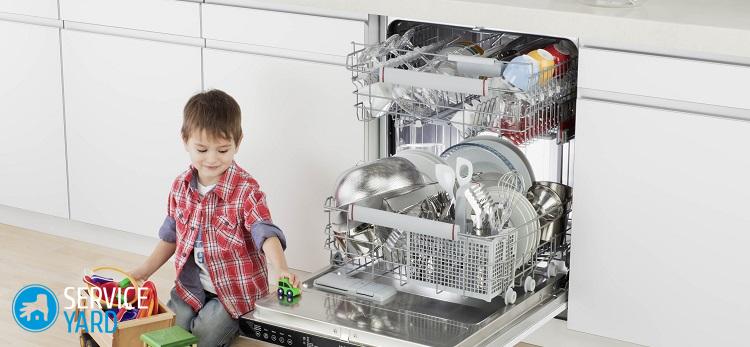
Additional tips
In the dishwasher, it is not recommended to wash:
- crystal glassware (or a gentle washing regime with special means is possible);
- earthenware utensils (as the glaze and patterns will fade if the washing and detergent programs are not properly selected);
- silver and aluminum items (or use special washing programs and detergents);
- wooden appliances (chopping boards, etc.);
- non-heat-resistant dishes (plastic, glass);
- old, cracked or glued dishes;
- items made of copper, tin and stainless steel.
Important! Do not use the dishwasher as a washing machine for kitchen towels, sponges and kitchen utensils.
Exceptions
- If you decide to load fragile dishes (porcelain, crystal, etc.), then arrange it so that the objects do not touch each other, otherwise after washing you will get cracked glasses and plates.
- You can’t put fragile dishes on top of one another and slide them at high temperatures.
Important! Some models of machines have a mode for washing fragile dishes or universal modes in which you can “wash” fragile and ordinary dishes at the same time. With this program, place fragile dishes in the upper tray. If this mode is not provided in the machine, then just do not set the heat.

Rule number 2 - choose the washing mode correctly
Different dishes have different temperature conditions, so you should not load ordinary plates and glass glasses in the dishwasher at the same time.
When choosing the appropriate options, remember the following:
- Dishes of medium pollution are washed at standard temperatures from 50 ° C to 65 ° C;
- Large pots, baking sheets require maximum heating - 75 C.
Important! In such a temperature regime, fragile dishes will be hopelessly spoiled, since it is necessary to choose a delicate program with a low washing temperature of 30 to 40 C.
The principle of operation of technology
The standard cycle of the dishwasher includes:
- Pre-wash (leftovers are washed off with cold water).
- Washing (washing with hot water using detergents).
- Rinse.
- Drying.
Important! Some machine models have an antibacterial program. Not only contaminants from dishes, but also bacteria are removed. In any model, several washing modes are provided and the system automatically determines how much water is needed to clean a particular volume. Some classes of dishwashers (functional and elite classes) independently determine the quality of washing dishes.
A normal wash lasts more than an hour in normal operation.With the half-load function and express mode, the dishes become clean within 30 minutes after switching on. However, with this mode, you have to get wet dishes, since they do not have time to dry. Choose a program (time and temperature of washing) according to the degree of contamination of the dishes and its type.
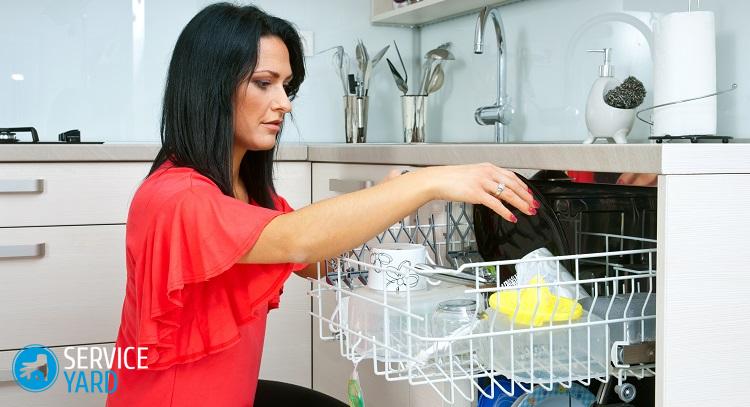
Rule number 3 - choose the right detergents
Handwashing: gels and powders are not suitable for dishwashers. This is, as is the case with washing machines, where the detergent for hand washing is not suitable for automatic machines (foam will fall from all holes). When using powders and soap, detergents for manual washing dishes, you will look for a repair workshop very quickly, and even under warranty they will not be restored to you, since the instructions say that only special detergents should be used.
Types of detergents
In the chemistry market, such products are represented by the following classes:
Important! Modern dishwashers for 1 wash consume about 30 g of regenerating salt and 25-30 g of powdered detergent. The average consumption of funds in tablets is 1 tablet for every 20 liters of water.
Pills are considered more practical. They are single-layer, multi-layer and combined. The latter include detergent components, rinse aid and regenerating salt. If the model of your dishwasher involves the use of tablets, then you do not have to buy 3 different substances.
Important! The use of tablet detergents in gentle programs is not recommended, since the tablet does not have time to dissolve.
Special Tools Efficiency
According to the properties, dishwasher detergents can be divided into:
- Strongly alkaline.
- Weakly alkaline (usually with enzymes). Enzymes are biological additives that break down fats, proteins, polysaccharides. Use enzymes to wash fragile dishes.
Important! Use detergents in the amount indicated in the instructions, as more does not mean better. If you stick to the “golden mean”, you will definitely use the dishwasher correctly.
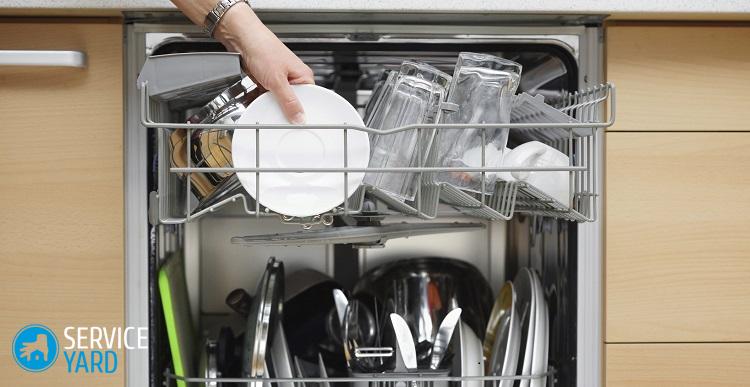
Additional funds
In addition to detergent, an effective rinse aid is required to clean dishes. It removes the remnants of soap, and also gives the dishes a shine and promotes quick drying.
Important! Rinse aid consumption is calculated approximately 0.5-0.7 liters for 10-12 cycles.
Special softeners
The cleanliness of the dishes also depends on the hardness of the water. If the water is too hard, then white stains will remain on the utensils. For the normal operation of the machine, there are regenerating salts that soften the water, favorably affect the quality of the washing, as well as the efficiency of the household appliance.
Important! The capacity intended for salt in cars is quite large, designed for 1-2 kg. Since lime from hard water often settles on the heating elements of the machine, the use of salt is simply necessary to protect against scale and prevent breakage. Which means that it’s the right way to use the dishwasher.
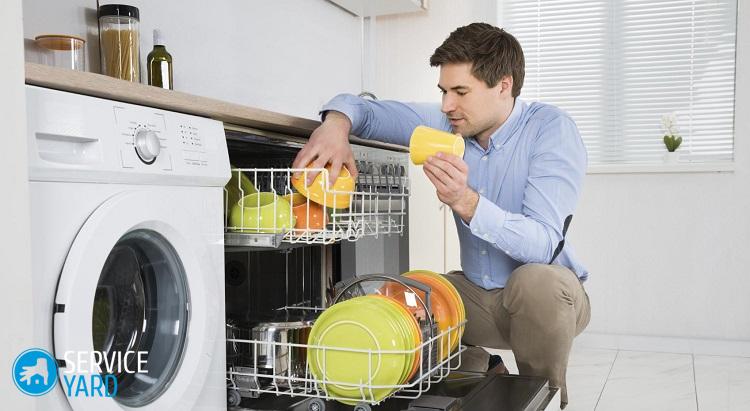
Rule number 4 - take care of the dishwasher
If you want the equipment to serve you for a long time, stick to the following recommendations:
- Clean the filter from time to time as food debris settles on it.
- Wash the baskets regularly.
- Use additional dishwasher care products: every 15-20 cycles use a degreaser (gel or powder). It will help remove grease from the inside of the machine.
- Perform general cleaning twice a year. For this procedure, use special or folk remedies, such as citric acid. Pour “anti-scale” into the dispenser and, without loading the dishes, turn on the standard cycle.
- Wipe the dishwasher weekly with a damp cloth with detergent inside and out, carefully walk through the door seals.
- After completing the program, leave the door of the dishwasher open for a while so that the mechanisms are dried and ventilated.
to contents ↑Important! The best way to extend the life of the dishwasher is to properly care for the appliances. We have covered this topic in more detail in our separate review. “How to clean a dishwasher at home?”.
Stock footage
Follow our tips, as well as the tips of the dishwasher manufacturers for operation and use, so that your kitchen assistant will serve you long and efficiently.




